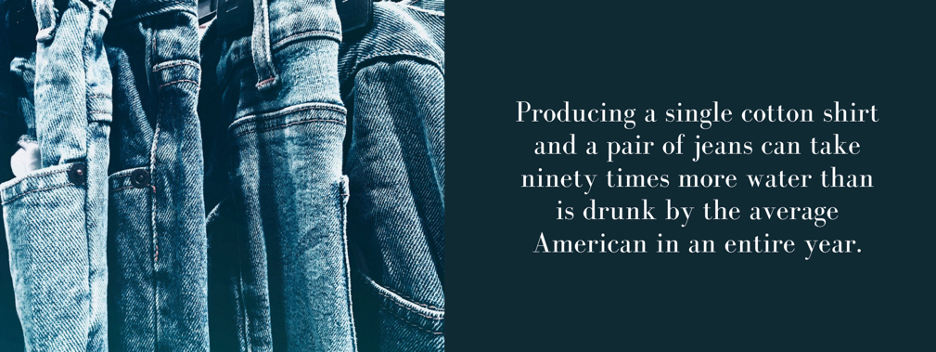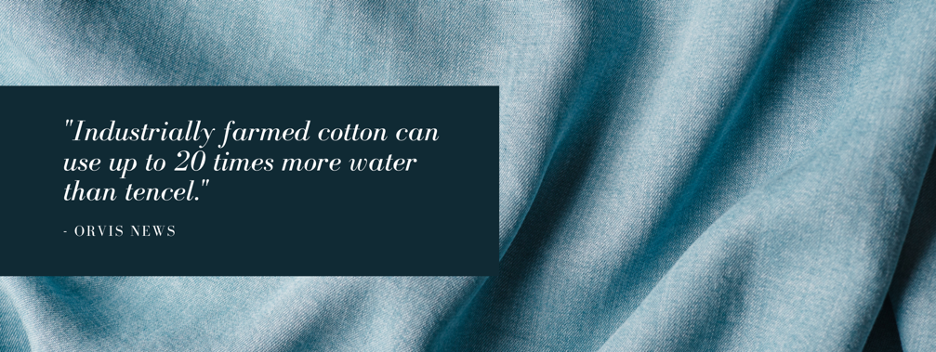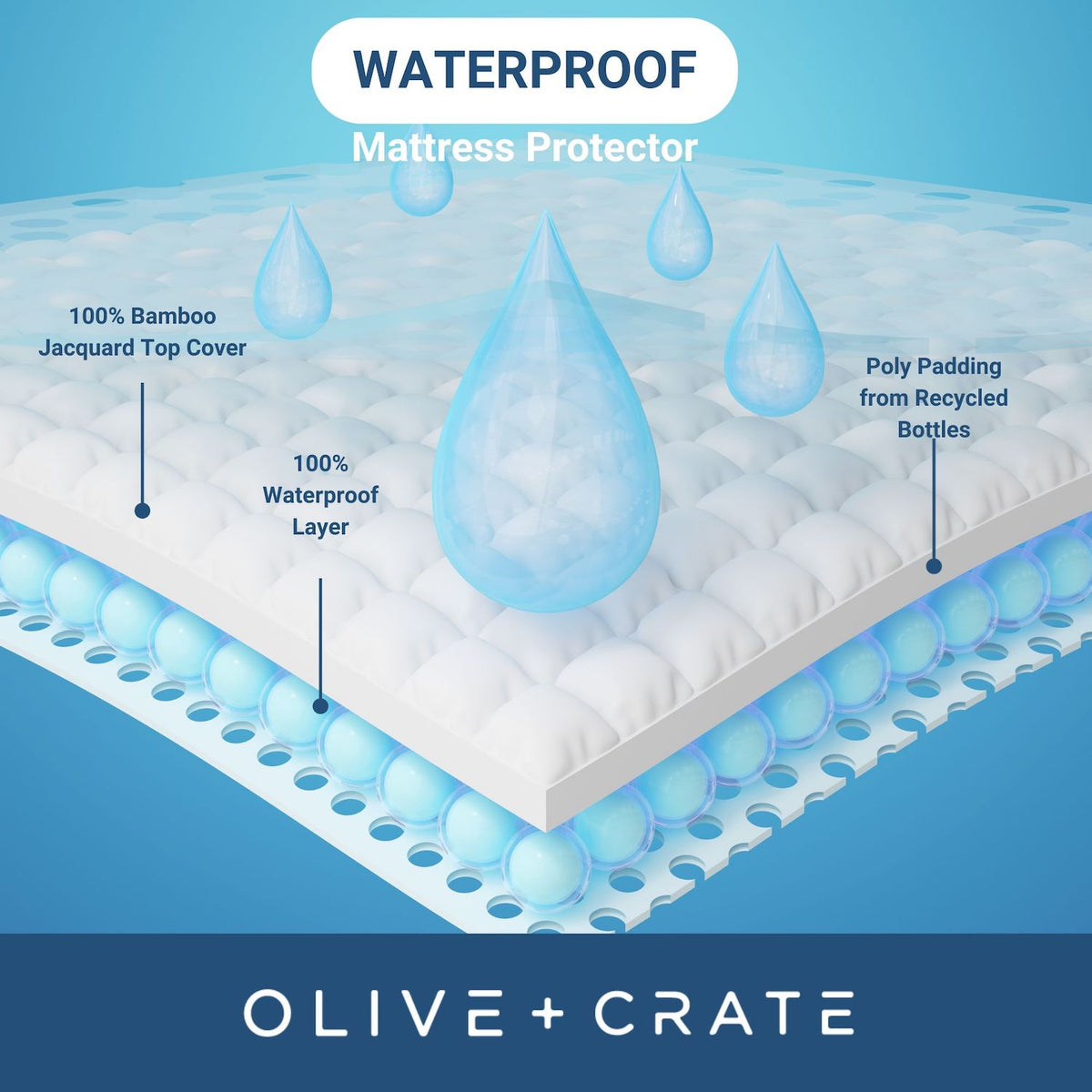Three Ways in Which Cotton Harms the Environment
by Elizabeth Burton
date: 11/08/2020
Farming is not the only process related to cotton production. The cotton must be harvested -- often by mechanical means -- cleaned and manufactured into usable products. At each stage of this process, the cotton is often shipped -- sometimes around the world -- in order to transition to the next step. For instance, raw cotton may be sent to another site to be cleaned, then to another to be spun. All this manufacturing and shipping places a strain on the climate as both require fossil fuels, water and electricity to function. Follow below to learn more about how cotton harms the environment.
Cotton Harms the Environment by... Contributing to Water, Soil and Air Pollution

Cotton harvesters and their representatives -- like Cotton USA -- claim that “U.S. cotton has always been an innovator in sustainability.” They also claim that much of their cotton is organic, safe and gentle on the environment. As such, many consumers assume cotton is indeed the most eco-friendly choice for clothing and homeware fabrics. However, cotton growing, harvesting and manufacturing all negatively affects the environment. According to the Organic Trade Association article “Get the facts about Organic Cotton,” “organic cotton now makes up 0.7% of global cotton production.” The World Wildlife Fund explains that “conventional production practices for cotton involve the application of substantial fertilizers and pesticides.” These pesticides then run off into soil and water, affecting “the health of biodiversity in and downstream from fields.” Unfortunately, Taylor Wanket writes in the Greener Ideal article “Cotton’s Dirty Little Secret,” cotton “uses more insecticides and pesticides than almost any other crop.”
How Pesticide Pollution Harms Humans

Pesticide pollutants can also harm the health of nearby residents -- as well as farmers -- who breathe in or consume the pesticides. The short-term, acute effects of pesticide exposure are not the only effects to watch for, however. The World Wildlife Fund explains that “runoff of pesticides, fertilizers and minerals from cotton fields...affect biodiversity...indirectly through long-term accumulation.” According to the brief “Pesticides and Human Health” released by Californians for Pesticide Reform, “pesticides have been implicated in human studies" of many diseases. These include studies of "leukemia, lymphoma and cancers of the brain, breasts, prostate, testis and ovaries.” Pesticide exposure and absorption has also resulted in “reproductive harm,” including “birth defects, still birth, spontaneous abortion, sterility and infertility.”
...by Causing Soil Erosion

In addition to contributing pollutants to the air, soil and water surrounding agro-farms, cotton also causes soil erosion. According to the WWF, “cotton cultivation...has depleted and degraded the soil in many areas” around the world. The overuse of farmland to cultivate one of the world’s largest and oldest crops has led to water source diversion. It has also contributed to soil mineral content manipulation and a number of other issues related to the chemical makeup of farmland. Taylor Wanket explains in the Greener Ideal article “Cotton’s Dirty Little Secret” that water runoff carries salt from one area to another. This runoff increases the soil’s salt content to the point that it becomes unusable. Wanket writes that -- after several years of overexposure and disruption of the soil’s chemical makeup -- that soil becomes a “wasteland, farmland that lies fallow.” Wanket explains that these poor cotton farming practices have resulted in vast swaths of land being rendered completely nonfunctional. Unfortunately, Wanket writes “in Uzbekistan, more than half of the farmland in the entire country is now useless.”
Why Soil Erosion is Deadly for People and the Planet

Soil erosion from poor farming practices -- especially in cotton growing -- has global consequences. Dede Sulaeman outlines the worldwide consequences of soil erosion in “The Causes and Effects of Soil Erosion, and How to Prevent It” for WRI. Sulaeman writes that “soil is eroding more quickly than it is being formed.” This has wiped out a large portion of usable agricultural land across the world. As our population grows, additional farmland is needed to accommodate more mouths and bodies. Developing better cotton farming practices -- or alternative crops -- is essential, Sulaeman notes. This is because the “risk of erosion will become even higher in the future due to emissions-driven temperature changes.” However, fear of future impacts cannot set aside soil erosion’s immediate impacts, Sulaeman explains.
Soil erosion has been negatively impacting economies for decades. According to recently released data, “the US agricultural sector [currently] loses about $44 billion per year from erosion.” Sulaeman writes that “this value includes lost productivity, along with sedimentation and water pollution,” with “lost farm income estimated at $100 million per year.” Europe and Asia also suffer from financial losses due to soil erosion. Sulaeman writes that the issue “costs European countries $1.38 billion in annual agricultural productivity losses and $171 million in lost GDP.” This loss accounts for an entire percent of Europe’s total GDP. Sulaeman warns that no continent is safe, with South Asia losing “$10 billion annually thanks to soil erosion.”
...by Using Up Tons of Water

The perception that cotton growth, harvesting and manufacturing into products is sustainable due to minimal water usage is patently false. While the cotton plant is fairly drought-tolerant -- especially when compared to foodstuffs crops like corn or beans -- it still requires immense quantities of water. Cotton produces two major water footprints, explains UNESCO-IHE researchers in their brief “The Water Footprint of Cotton Consumption.” These two footprints are the “internal water footprint” and the “external water footprint.” The internal water footprint of cotton refers to water used in the production and "export of domestically produced cotton products.” Cotton’s external water footprint refers to “the annual volume of water resources used in other countries to produce cotton products consumed by” its inhabitants. According to the brief -- as of 2005 -- the global water footprint of cotton made up 2.6 per cent of the full global water footprint.”
As of 2016, cotton production still required vast amounts of water, marring its reputation for sustainability. In her article “Quenching Cotton's Thirst: Reducing the Use of Water in the Cotton Lifecycle,” Andrea Newell writes that “it takes more than 20,000 liters (ca. 5,283 gallons) of water to produce just one kilogram (2.2 pounds (ca. 1 kg)) of cotton, which roughly equals one T-shirt and a pair of jeans.” For perspective, one might compare this amount of water -- which barely creates a single outfit -- to how much water humans drink each year. The Atlantic writer James Hamblin notes in his article “How Much Water Do People Drink?” that the average American drinks only “about 58 gallons (0.22 cubic meters)” each year. As such, producing a single cotton shirt and a pair of jeans can take ninety times more water than is drunk by the average American in an entire year.
Alternative Fibers

Thankfully, a number of alternative, more sustainable natural fibers exist on the market. For instance, the Orvis News article “Tencel® vs. Cotton: a Story of Nurture and Nature” explains, the cellulose fiber “tencel” offers an eco-friendly option. According to the article, “tencel production requires less water than cotton production—industrially farmed cotton can use up to 20 times more water.”













